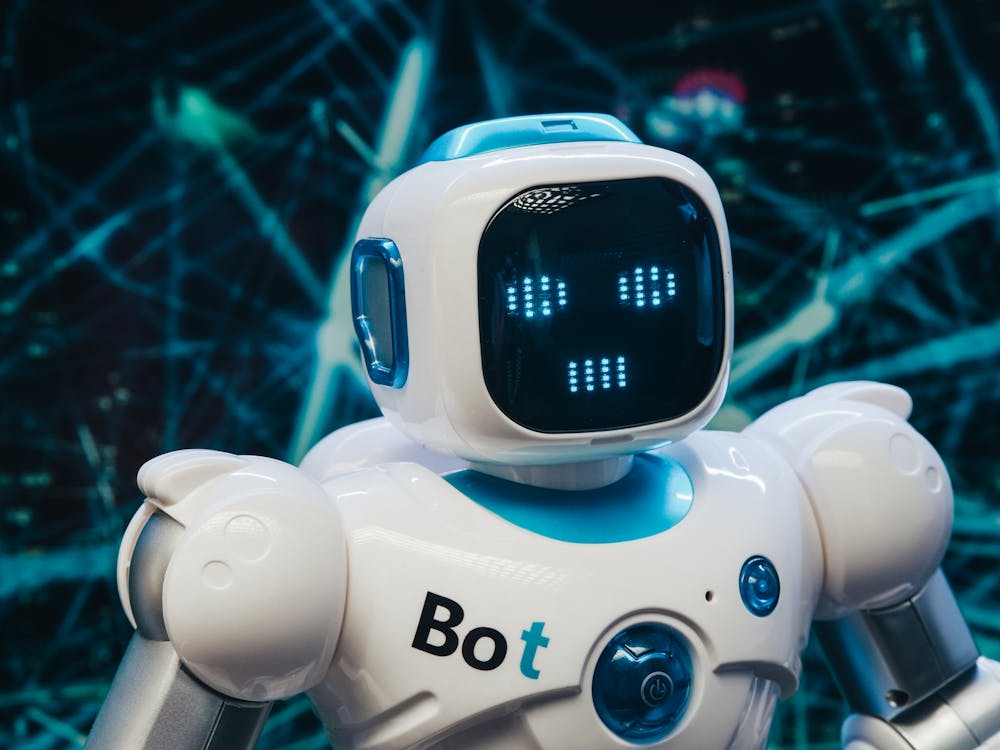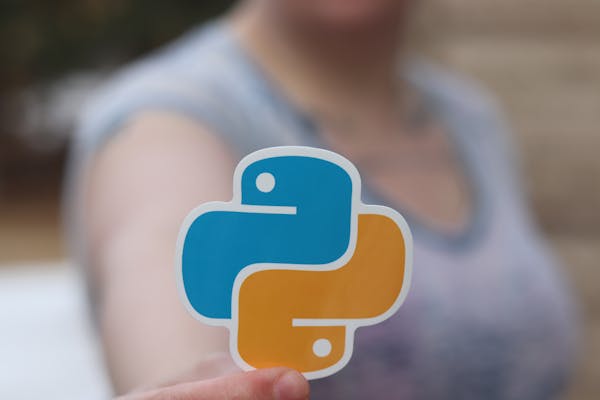AI in Technology The Future of Innovation and Transformation
AI in Technology
Table of Content:
Introduction.......................................................1Definition of Artificial Intelligence (AI)...........1.2
AI Technology in Simple Words:.....................1.3
Importance of AI in technology:.....................1.4
What is AI in Technology?.......................2
Examples of AI technology:.....................2.3
Types of AI Technology.....................2.4
Three examples of technologies that use AI:.....................2.7
What is AI in Technology?.......................2.9
Examples of AI technology:.....................3.2
Types of AI Technology.....................3.4
How are AI robots being used in customer service, .......................2
Examples of AI technology:.....................4.1
Best programming languages for AI beginners (e.g. Python, Java, C)...4.2
Machine Learning:.....................4.3
AI in Technology The Future of Innovation and Transformation
I. Introduction
Definition of Artificial Intelligence (AI):
Artificial Intelligence, or AI, is an area of computer science that focuses on creating intelligent machines that can perform tasks that typically require human-like intelligence, such as learning, reasoning, problem-solving, and decision-making. AI is a rapidly growing field that is revolutionizing the way we interact with technology and is already being used in many industries, including healthcare, finance, and transportation.
AI Technology in Simple Words:
AI technology can be described as the development of intelligent machines that can perform tasks typically requiring human-like intelligence. These machines can learn from experience, adapt to new situations, and improve their performance over time.
Importance of AI in technology:
The importance of AI in technology cannot be overstated. It has the potential to transform the way we live and work, improving efficiency, accuracy, and productivity in virtually every industry. From self-driving cars to virtual personal assistants, AI is already changing the way we interact with technology, and it will continue to do so in the future. As AI technology continues to advance, we can expect to see even more exciting developments and innovations in the years to come.
II. What is AI in Technology?
Explanation of how AI works
AI in technology refers to the use of artificial intelligence to create intelligent machines that can perform tasks typically requiring human-like intelligence. These machines can learn from experience, adapt to new situations, and improve their performance over time. AI technology is used in a wide range of applications, from speech recognition and image analysis to natural language processing and robotics.
AI in technology refers to the use of artificial intelligence to create intelligent machines that can perform tasks typically requiring human-like intelligence. These machines can learn from experience, adapt to new situations, and improve their performance over time. AI technology is used in a wide range of applications, from speech recognition and image analysis to natural language processing and robotics.
Examples of AI technology
In shorts: (e.g. autonomous cars, chatbots, recommendation systems)
There are many examples of AI technology in use today. Some of the most common include:
- Revolutionizing Interactions: The Power of Natural Language Processing in Personal Assistants like Siri and Alexa
- Image recognition software, which can identify objects and people in photos and videos
- Recommendation systems used by e-commerce sites and streaming services to suggest products or content based on user preferences
- Self-driving cars, which use sensors and machine learning algorithms to navigate roads and traffic
ChatGPT is the leading AI language model that uses deep learning techniques to generate human-like text. It has a wide range of applications, from answering questions and generating content to assisting with language translation and summarization. ChatGPT's ability to learn from vast amounts of data and generate coherent responses has made it a popular tool for businesses and individuals alike. Its versatility and advanced capabilities continue to make it a top choice in the field of artificial intelligence.
There are many examples of AI technology in use today. Some of the most common include:
- Revolutionizing Interactions: The Power of Natural Language Processing in Personal Assistants like Siri and Alexa
- Image recognition software, which can identify objects and people in photos and videos
- Recommendation systems used by e-commerce sites and streaming services to suggest products or content based on user preferences
- Self-driving cars, which use sensors and machine learning algorithms to navigate roads and traffic
ChatGPT is the leading AI language model that uses deep learning techniques to generate human-like text. It has a wide range of applications, from answering questions and generating content to assisting with language translation and summarization. ChatGPT's ability to learn from vast amounts of data and generate coherent responses has made it a popular tool for businesses and individuals alike. Its versatility and advanced capabilities continue to make it a top choice in the field of artificial intelligence.
III. Types of AI Technology
There are four types of AI technology:
Reactive Machines:
These machines can react to specific situations but cannot learn from experience or adjust their behavior accordingly.
Limited Memory:
These machines can learn from previous experiences but have a limited ability to retain information.
Theory of Mind:
These machines can understand the emotions and motivations of humans and interact with them in a more natural way.
Self-Aware:
These machines have a sense of self-awareness and can understand their own emotions and motivations.
In addition to the four types of AI technology, there are seven types of AI based on their capabilities:
There are four types of AI technology:
Reactive Machines:
These machines can react to specific situations but cannot learn from experience or adjust their behavior accordingly.
Limited Memory:
These machines can learn from previous experiences but have a limited ability to retain information.
Theory of Mind:
These machines can understand the emotions and motivations of humans and interact with them in a more natural way.
Self-Aware:
These machines have a sense of self-awareness and can understand their own emotions and motivations.
In addition to the four types of AI technology, there are seven types of AI based on their capabilities:
Seven types of AI (purely reactive, limited memory, theory of mind, self-aware, AI-assisted, human-inspired, self-improving)
IV. Technologies That Use AI
Three examples of technologies that use AI:
- Voice assistants
- Image recognition
- Predictive analytics
- Siri
- Alexa
- Tesla Autopilot
- Netflix
- Voice assistants
- Image recognition
- Predictive analytics
- Siri
- Alexa
- Tesla Autopilot
- Netflix
Which is the Most Intelligent AI Robot?
There are many intelligent AI robots, but perhaps the most well-known is Sophia, a humanoid robot developed by Hanson Robotics. Sophia can understand and respond to human emotions and has been featured in numerous media appearances and interviews
There are many intelligent AI robots, but perhaps the most well-known is Sophia, a humanoid robot developed by Hanson Robotics. Sophia can understand and respond to human emotions and has been featured in numerous media appearances and interviews
How AI Robots in Use Today?
AI robots are used in many industries today, including healthcare, manufacturing, and customer service. They can perform tasks like administering medication, assembling products, and providing customer support.
AI robots are used in many industries today, including healthcare, manufacturing, and customer service. They can perform tasks like administering medication, assembling products, and providing customer support.
How AI use In healthcare or medical profession?
AI robots are being used to assist with patient care and support medical professionals. For example, some hospitals are using robots to deliver medications to patients, reducing the risk of human error and freeing up nurses to focus on other tasks. Other robots are being used to assist with surgeries, providing precise and accurate movements that can improve outcomes for patients.
AI robots are being used to assist with patient care and support medical professionals. For example, some hospitals are using robots to deliver medications to patients, reducing the risk of human error and freeing up nurses to focus on other tasks. Other robots are being used to assist with surgeries, providing precise and accurate movements that can improve outcomes for patients.
How are AI robots being used in manufacturing to improve production efficiency and what are some of the benefits of their use?
In manufacturing, AI robots are being used to automate assembly lines and improve production efficiency. These robots can perform repetitive tasks with speed and precision, freeing up human workers to focus on more complex and creative tasks. They can also monitor production processes in real-time, identifying potential issues and alerting human workers to take corrective action.
In manufacturing, AI robots are being used to automate assembly lines and improve production efficiency. These robots can perform repetitive tasks with speed and precision, freeing up human workers to focus on more complex and creative tasks. They can also monitor production processes in real-time, identifying potential issues and alerting human workers to take corrective action.
How are AI robots being used in customer service, and what benefits do they provide compared to traditional customer service methods?
AI robots are also being used in customer service, with chatbots and virtual assistants becoming increasingly common. These robots can interact with customers through text or voice interfaces, providing instant support and answers to frequently asked questions
Overall, the use of AI robots is becoming increasingly prevalent in many industries, and is likely to continue to grow in the future as the technology advances. As AI becomes more sophisticated and capable, we can expect to see even more innovative applications of this technology in a wide range of field.
AI robots are also being used in customer service, with chatbots and virtual assistants becoming increasingly common. These robots can interact with customers through text or voice interfaces, providing instant support and answers to frequently asked questions
Overall, the use of AI robots is becoming increasingly prevalent in many industries, and is likely to continue to grow in the future as the technology advances. As AI becomes more sophisticated and capable, we can expect to see even more innovative applications of this technology in a wide range of field.
More Topics :
Basics of Artificial Intelligence Programming.
Programming Languages for AI.
Learning AI Without Coding.
Stay tuned for the next part of the article, where we'll delve into programming AI and its impact on the future
Stay tuned for the next part of the article, where we'll delve into programming AI and its impact on the future
V AI Programming Basics
Overview of AI programming basics:
Data Processing:
Data is the fuel for AI algorithms. AI programmers need to be proficient in handling and processing large datasets, including data cleaning, feature engineering, and data visualization.
Programming Languages:
AI programming can be done using various programming languages such as Python, R, Java, C++, and others. Familiarity with these languages and their libraries for machine learning and AI development is essential.
Evaluation and Optimization:
AI programmers need to evaluate the performance of their models and optimize them for better accuracy, speed, and efficiency. Techniques like cross-validation, hyperparameter tuning, and model evaluation metrics are essential for this process.
Ethical Considerations:
AI programmers should also be mindful of ethical considerations in AI development, such as bias, fairness, transparency, and accountability. Understanding the ethical implications of AI and incorporating responsible practices in programming is critical.
Continuous Learning:
AI is a rapidly evolving field, and staying updated with the latest advancements, research papers, and best practices is crucial for AI programmers to remain competitive and build cutting-edge AI solutions.
Best programming languages for AI beginners (e.g. Python, Java, C++):
Python: Python is one of the most popular and widely used programming languages for AI. It has a large and active community that provides extensive libraries and frameworks for machine learning and AI development, such as TensorFlow, PyTorch, and scikit-learn. Python's simple syntax and readability make it an excellent choice for beginners to learn AI concepts and implement machine learning algorithms.
Java: Java is a versatile and widely used programming language that has a rich ecosystem of libraries and tools for AI development. Java's strong typing and object-oriented features make it suitable for building large-scale AI applications. Java is also widely used in enterprise applications and big data processing, which makes it a valuable skill for AI professionals working in those domains.
C++: C++ is a powerful and efficient programming language that is widely used in performance-critical AI applications, such as computer vision and robotics. C++ provides low-level access to system resources and allows for fine-grained memory management, which can be advantageous in optimizing AI algorithms for speed and efficiency. However, C++ has a steeper learning curve compared to Python and Java, making it more suitable for those with prior programming experience.
R: R is a programming language specifically designed for data analysis and statistics, making it a popular choice for AI applications that involve extensive data manipulation and visualization. R has a rich ecosystem of packages for machine learning and statistical modeling, making it a good option for AI beginners with a background in statistics or data science.
JavaScript: JavaScript is a widely used programming language for web development, but it also has libraries and frameworks for machine learning and AI, such as TensorFlow.js and Brain.js. JavaScript's popularity in web development and its compatibility with web browsers make it a good choice for building AI applications that run in web environments.
Ultimately, the best programming language for AI beginners depends on their background, learning style, and the specific AI applications they want to pursue. Python is often recommended as a beginner-friendly language due to its simplicity and extensive libraries for AI, but other languages like Java, C++, R, or JavaScript may be more suitable for certain scenarios or domains. It's important to choose a language that aligns with your interests and learning goals, and to invest time in learning the fundamentals of programming and AI concepts regardless of the language you choose.
Read Related Articles: Programming Languages for AI
Table of Content:
Introduction.......................................................1Definition of Artificial Intelligence (AI)...........1.2
AI Technology in Simple Words:.....................1.3
Importance of AI in technology:.....................1.4
What is AI in Technology?.......................2
Examples of AI technology:.....................2.3
Types of AI Technology.....................2.4
Three examples of technologies that use AI:.....................2.7
What is AI in Technology?.......................2.9
Examples of AI technology:.....................3.2
Types of AI Technology.....................3.4
How are AI robots being used in customer service, .......................2
Examples of AI technology:.....................4.1
Best programming languages for AI beginners (e.g. Python, Java, C)...4.2
Machine Learning:.....................4.3










Post a Comment